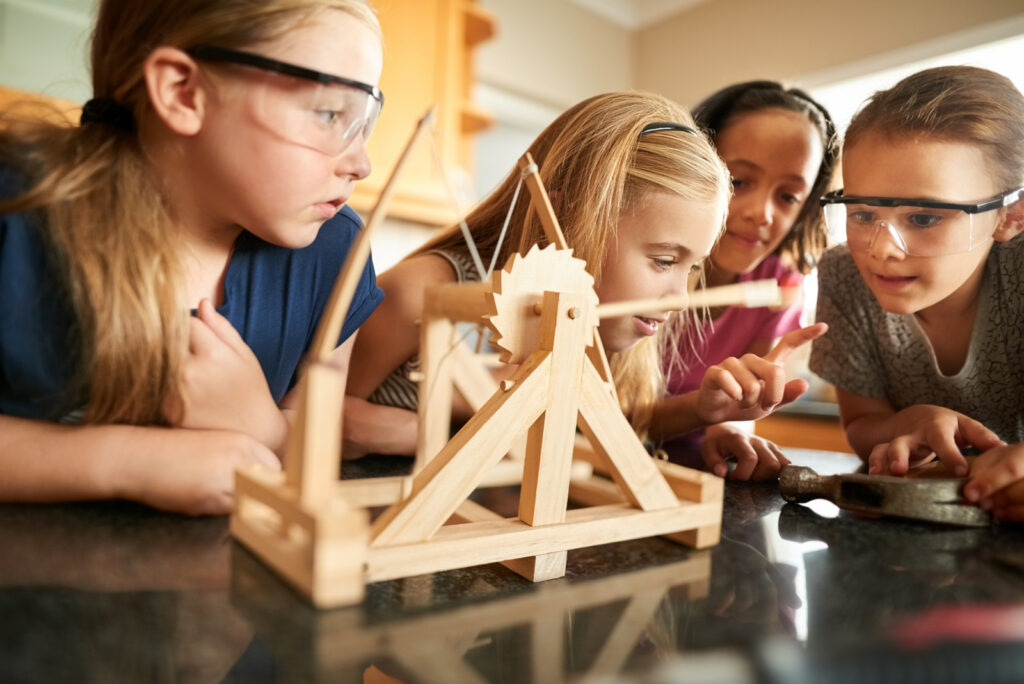STEAM education, integrating the ‘A’ of arts with STEM (science, technology, engineering, and mathematics) is gaining recognition for its ability to cultivate inquiry, creativity, and problem-solving skills (European Commission, 2022). The global demand for a multidisciplinary scientific workforce underscores the importance of STEAM education in addressing the challenges of the modern world through a fresh approach, involving a diverse scientific workforce proficient in a range of skills, including new technologies and interdisciplinary thinking (UNESCO, 2019).

The integration of multiple STEAM concepts has thus become key to tackling the problems of our era. There is a growing interest in integrated and interdisciplinary curricula, proven to be more effective in forming well-informed and highly competent citizens (Perales & Aróstegui 2021).
Moreover, STEAM education aims at fostering engagement and addressing social inequalities: it recognizes the diverse learning styles and preferences of students while striving to promote fairness, inclusiveness, and harmony in society. Research shows that robust STEAM training positively impacts students’ academic performance, perception of learning, and leadership skills (Liao et al, 2022).
However, the interdisciplinary nature of STEAM can pose challenges for students, making engagement a crucial aspect of effective STEAM education. Student engagement can be fostered by employing interactive and hands-on activities, establishing real-world connections, and catering to individual learning needs and styles. This emphasis is particularly important for students with learning disorders, difficulties, and diverse backgrounds.
It is in this view that MyBoxOfSTEAM incorporates a storytelling component in STEM subjects.
MyBoxOfSTEAM: cultivating active learning of Science through Art
MyBoxOfSTEAM is a project designed to enhance student involvement in STEAM subjects at the primary school level. The project offers curriculum-based boxes and user-friendly educational resources for teachers that combine storytelling and inquiry-based learning.
Art crafting and storytelling foster student engagement making science more fun and enjoyable! Through storytelling, students conceptualize STEM concepts while developing their creativity, and educators can create engaging narratives that transcend subject boundaries, illustrating the interconnected nature of human achievements.
This initiative encourages the development of key skills such as teamwork, communication, creativity, critical thinking, and presentation abilities, as well as self-awareness of acquired skills. Moreover, the project dedicates special attention to inclusiveness, putting the needs of pupils with learning disorders and other underrepresented groups at the center of the material design.
The project answers the need for innovative ways to enhance the learning experience, foster curiosity, and develop essential skills. By prioritizing student engagement and incorporating interdisciplinary and storytelling components, STEAM education becomes more vibrant, relevant, and effective, so that we can nurture a generation of students equipped with the knowledge, creativity, and problem-solving abilities necessary to tackle the challenges of the future.
References:
European Commission. (2022, November 2). Increasing student engagement in STEAM education. https://school-education.ec.europa.eu/en/insights/practices/increasing-student-engagement-steam-education
Liao, X., Luo, H., Xiao, Y., Ma, L., Li, J., & Zhu, M. (2022). Learning Patterns in STEAM Education: A Comparison of Three Learner Profiles. MDPI AG Education Sciences, 12(9), 1-15. http://dx.doi.org/10.3390/educsci12090614
Perales, F. J., & Aróstegui, J. L. (2021). The STEAM approach: Implementation and educational, social and economic consequences. Arts Education Policy Review, 1-9.
https://doi.org/10.1080/10632913.2021.1974997
UNESCO. (2019). Exploring STEM Competences for the 21st Century (Current and Critical Issues in Curriculum, Learning and Assessment Series, no. 30). https://unesdoc.unesco.org/ark:/48223/pf0000368485